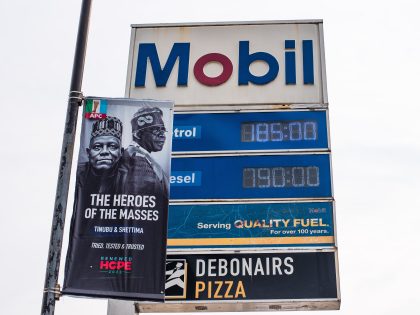#SAHipHop2014: Looking Back At The Year That Was

In 2014, South African Hip Hop was allowed longer strides on the mainstream’s catwalk. The line between artist and celebrity got blurred as rappers continued to package themselves into products ripe for mass consumption. Meanwhile, marketers clawed further into the consciousness of an artform they dared not be associated with ten years prior. For the most part the music was good, but that’s as far as it went. The beats were nice, but mostly generic. Imported flows and concepts were given merit as long as the content was ‘local’.
Hip hop didn’t scare anyone, nor was it likely to incite mass action towards any socio-economic cause. To remain relevant, South African Hip Hop engaged in ego-boosting PR exercises masquerading as beef. Moments of brilliance lay scattered in the field of pop aspirations. By-standers stood silent through it all, perhaps overwhelmed by the weight of the shadow that hip hop globally has allowed itself to become.
In 2004, South African Hip Hop embarked on what felt like a maiden voyage to its now-widespread acceptance. The seven-person rap crew Skwatta Kamp won a South African Music Award (SAMA), “Best Rap” category, with an independently-released and distributed album called Khut en joyn. One year later, they managed to sell 25,000 copies of their major label debut Mkhukhu Funkshen. A second SAMA followed.
In 2005, a rapper signed to music producer DJ Cleo’s Will Of Steel label sold 50, 000 copies. Going by the name Pitch Black Afro, and bolstered by a call-and-response single which no one could stop singing along to, the Soweto-born emcee became – and, at time of writing, remains – the first solo rapper to go platinum. And he did so at a time when it really mattered, both critically and commercially (gold and platinum certification has since been re-adjusted to 20,000 and 40,000 copies sold respectively).
The 2004-2005 period felt like the apex of events which had been brewing some years prior. Rage Records had cemented itself as a respectable, if boutique, label through compilations such as Expressions and Maximum Sentense, and through signing acts such as Proverb, Zubz and producer Battlekat onto its roster. Another rap group, Cashless Society, had managed to secure a deal with DJ Bobbito’s now-defunct Fondle Em label to distribute their single “Blaze the breaks.” DJ Bionic’s Eargasm Entertainment had released Mizchif’s Life From All Angles EP; the Hymphatic Thabs had single-handedly written the manual for how to thrive as an independent hip hop artist in South Africa with his debut release, Error Era. In Cape Town, African Dope Records had experienced some amount of success with Goddessa and Moodphase 5ive. The former, an all-female trio, broke through with “Social Ills,” a single which did well to solidify Cape Town’s image as the more ‘conscious’ of the two cities. The latter, a multi-genre outfit led by emcee D-Form and vocalist Ernie, implanted itself in Jozi’s hearts with their appearance at Club 206.
“We were on our first African Dope tour in April 2001… We arrived at 206 and Moodphase rocked it so hard the power went down. They rocked it even harder with an impromptu acoustic jam while the power was down…” recalled African Dope co-founder Roach in an interview.
Billing itself as “South Africa’s No.1 Hip Hop Magazine” and with distribution spanning not only South Africa but neighbouring states as well, Hype Magazine hit the shelves in 2004. The print publication’s first two issues were guest edited by DJ Ready D: champion turntablist; community builder; car enthusiast and, most importantly, co-founder of Prophets Of da City and Brasse Vannie Kaap — two globally-revered cultural institutions with roots in the Cape Flats. It was fitting, then, that Ready D was chose as the one to ignite the torch for the magazine. The lantern has been burning since, changing hands through a shifting roster of contributors and editors.
Hype may have dished out more than its fair share of mediocre content through the years. However, it’d be unfair to not commend them for the good work they’ve done, most notably their continued relevance, in a shaky South African print environment. As former editor Simone Harris attests in the magazine’s 10th Anniversary issue, Hype is “a history book that has served our [South African] hip hop heritage well” as well as a “brand which has kept up with each new generation of hip hop enthusiasts.”
The year 2014 was filled with great rap releases. K.O. of the group Teargas came brandishing a brand new set of flows on Skhanda Republic, his debut solo outing. “Caracara”, the second single from that album has amassed an upward of 1 million views (inspiring spoofs like this one in the process).
AKA ended off a gruelling 2014 by winning in four categories at the third annual South African Hip Hop Awards. His sophomore album Levels had been producing strong singles such as “Kontrol” and “Congratulate” well before its mid-year release. The album best showcases how, over the years, hip hop in South Africa has learned how to produce songs which can work collectively or as singles. The latest, “All eyez on me,” has guest raps from JR and Da Les, with hook duties masterfully handled by Burna Boy. The song premiered via a Google+ hangout and was simultaneously broadcast on radio stations in Kenya and Nigeria. AKA answered questions from the anchor Lee Kasumba and from guests in the hangout. The song continues to gain traction and has recently entered A-list rotation on BBC 1Xtra.
Cassper Nyovest’s Tsholofelo played like the scattered thoughts of an artist still figuring out what approach to music works best for their audience. It showcased his breadth as a rapper, sure, but it failed to establish him as a fully-fledged artist. However, it’s only his first effort.
When it wasn’t arguing over who the best is via a list curated by a satellite television broadcaster; engaging in c-grade social media antics; or writing open letters to radio stations, South African Hip Hop did extremely well for itself. Away from the glimmer of the mainstream, Cape Town continued to quietly nurture its own class of talent. “We had to deal with so many gatekeepers, turned down so many times by people already on the scene,” said Laneave Hansen of Rude World Records, the independent label which, besides pop sensation Jimmy Nevis, boast artists like Kita Keetz, BoolZ, and Namibia’s Black Vulcanite, acts who are giving an alternative take on the genre and expanding the rap conversation beyond the confines of eJozi (the city of Johannesburg). There’s also Andy Mkosi with her traditionalist approach and real-life raps; Miss Celaneous favours hard-edged, finger-up-your-nose-type lyrics. In one fell swoop, she lists all that is wrong with the ‘scene’ as she raps: “all I gotta say/ I am bored as fuck with the game in SA/ same old naaiers (fuckers) get the fame/” on “#Checkmeout”, a song which utilises Nipsey Hustle’s song of the same title.
Away from the mainstream, Jozi’s a hive of active movements, like the internationally-acclaimed Scrambles for Money battle rap league; innovative rap cliques like Revivolution; and mind-bendingly dope delivery a la Gigi Lamayne. Boyz ‘n’ Buck$, a crew of creative entrepreneurs with associations in music and fashion, have crafted a visual identity which resonates with their fanbase.
Okmalumkoolkat’s one of the members, alongside the likes of Riky Rick and Bubhesii — the former an artist whose debut album, Family Tree, is about to disrupt the way South African rap is set up, while the latter is a Jozi rap mainstay who’s collaborated on music with the likes of the P.O. Box Project, and recently launched a mobile boutique store with his wife. Okmalumkoolkat’s been the quiet architect for a lot of trends in South African Hip Hop. While the likes of HHP and Morafe may have been doing what’s now termed New Age Kwaito for more than a decade, it’s Dirty Paraffin (Okmalumkoolkat + Dr SpiZee) who acted as the bridge not only through introducing experimental beats favouring bass-heavy frequencies, but through their slang, and through the means through which they chose to distribute music — mostly on-line, for free, and with no strings attached.
It’s a strategy which has worked for Cassper Nyovest. In a recent visit to Zimbabwe, he stopped by the 2 Broke Twimbos’ studio to chat about his career. Talking about his team’s music distribution strategy, Cassper said: “Our music is free and anybody can download it; you’ll never know where it’ll end up. It probably started with one kid in Zimbabwe who played it to his friend, and then it ended up spreading, [and that was] before we started playing on radio.”
Nyovest is worthy of mention for re-writing the rule book on how to make it as an artist in South Africa. He came as an independent off the bat, and retains ownership of all of his music to this day. How he achieved nationwide acclaim with two songs to his name (“Gusheshe” and “Doc Shebeleza”) is a topic all on its own. He’s nominated under five categories for the 2015 SAMA Awards to be held in two months’ time.

There’s elation in the air. South African Hip Hop is the media’s darling. Headlines such as ‘South African Hip Hop wins big at [insert desired award ceremony name here]’ are easy to come by. It’s a good time to be a part of it all — as a by-stander in the pit, shouting your lungs out word-for-word to your favourite rapper’s songs, at the expense of carrying the baggage that comes with being a rap fan.
Less discussed is the danger of having any single, “authoritative” voice on the scene. South African rap writing needs to be elevated beyond an eighty-odd-page monthly print issue which can be read in one sitting, in under an hour! There is room for more voices; alternative voices; voices of change, of discontent, of outrage!
In a scene which measures success by the amount of radio spins a song receives and values awards ceremonies — which couldn’t give two shits about hip hop were they held at gunpoint — over everything else, this vital voice is rendered mute. It’s the voice of a section of South African Hip Hop dedicated solely to dope beats, dope rhymes, having fun, and being ‘nice with it.’ This legion of heads is scattered across the country, bubbling in their locales yet never getting the ‘spark’ to make it onto the mainstream. They toil to upload songs onto the Internet; to share links on social networks; to e-mail blogs requesting for interviews. They are the foot soldiers of South African Rap. Alas, ‘keeping it real’ doesn’t pay the bills. Now also a good time to innovate; to disrupt the trend; to build pan-African institutions inspired by hip hop!



















